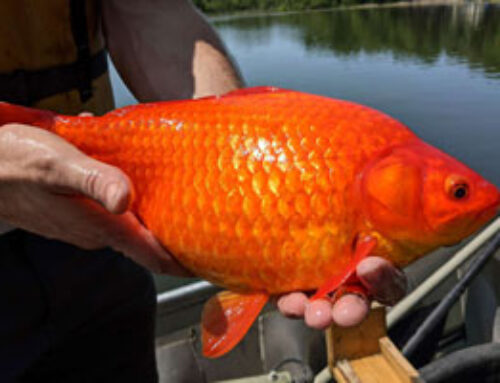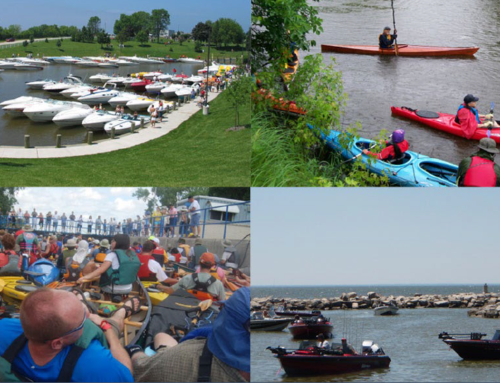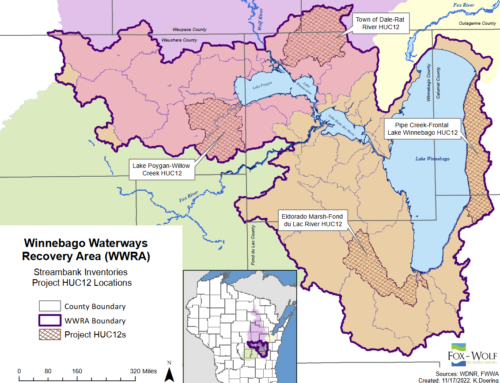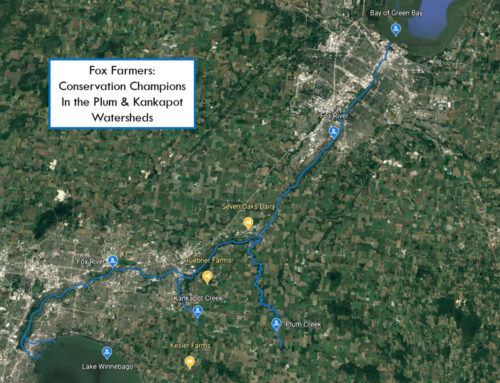Article submitted by Wesley Kotila, Outagamie County Land Conservation Department
In the fall of 2020, Outagamie County Land Conservation Department provided assistance to a private landowner with the construction of a treatment wetland complex in the West Plum Creek watershed. The site started as an active farm field which was converted to a combination of sediment basins, wetland cells, and upland native plantings. These systems are being referred to as ARTS (Agricultural Runoff Treatment Systems). Plum Creek is an extremely flashy system where the water level can rise several feet very quickly after storm events. The intent of this project is to divert the portion of the runoff from the stream corridor that is above the ordinary high water mark into the complex. It is estimated that, on average, twelve events per year will have runoff diverted and treated.
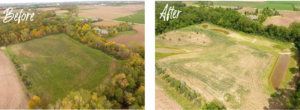
The treatment occurs through multiple cells that promote wetland vegetation which is similar to other systems that have been installed within the Plum Creek watershed. Water from the stream is diverted into the system through an 8” pipe. The first phase of treatment is a sediment basin that is approximately ½ acre in size (right side of “after” picture). After the courser sediment has settled, the water flows through a 1-acre treatment wetland cell; further reducing sediment as well as promoting wetland plant growth. Lastly, the water flows to a deep wetland cell for further settling and water quality improvement.
Since the project was installed late in the year, the site was initially planted with a cover crop that stayed dormant over-winter and came up in the spring
of 2021. During the spring, the upland areas of the site, approximately 4 acres, were planted with a native seeding mixture of grasses, forbs, and wildflowers. This seeding mixture will promote pollinators and provide upland habitat for birds and other wildlife. The native topsoil was spread throughout the wetland cells and low areas surrounding the sediment basin which has produced a plant community of sedges and cattails. During the fall of 2021, these areas will be planted with additional wetland seed in order to promote a more diverse plant community in the wetland areas.
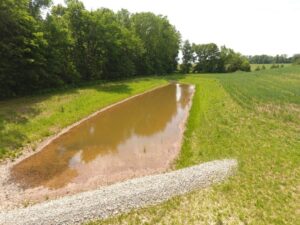
Initial sediment basin
The project has been designed with a 10-year maintenance cycle. Based on calculations and using results from a downstream USGS water quality research station Outagamie County staff were able to make approximations on how much phosphorus and sediment will be trapped in the system. They estimate that approximately 37,500 pounds (19 tons) of sediment and 100 pounds of phosphorus will be trapped on an annual basis.
The project is an innovative
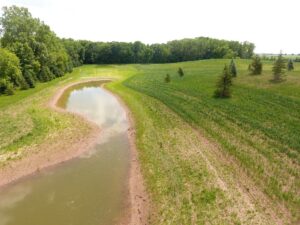
Deep wetland cells at the project site
practice that combines water storage with nutrient reductions that could be a staple in future conservation work. Along with the stated benefits to the watershed, this site should be a great location to give tours and educate interested parties on the benefits of agricultural runoff treatment systems.


